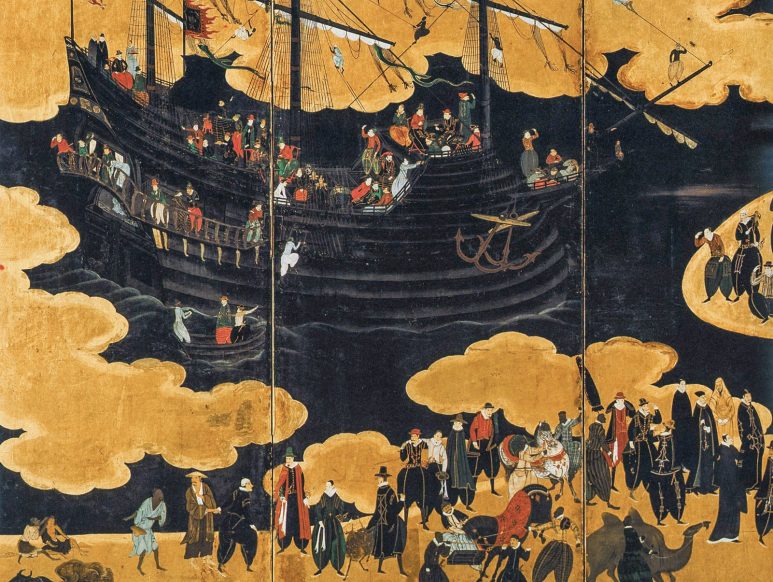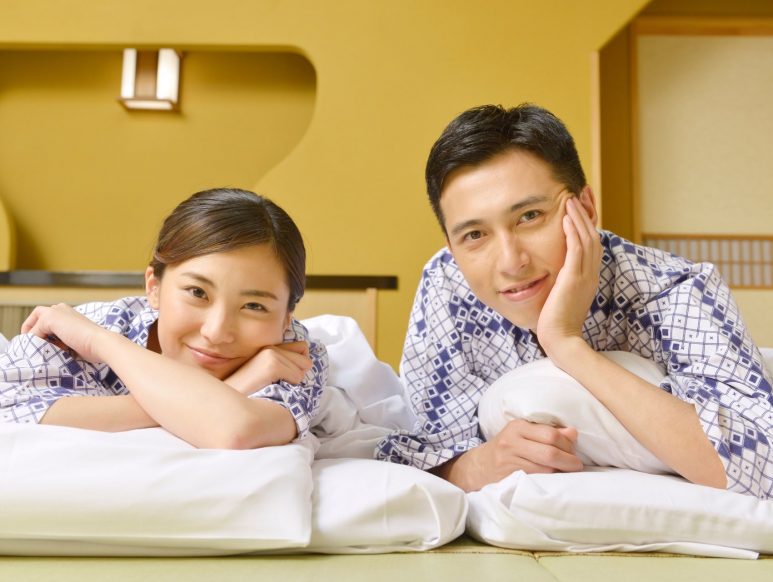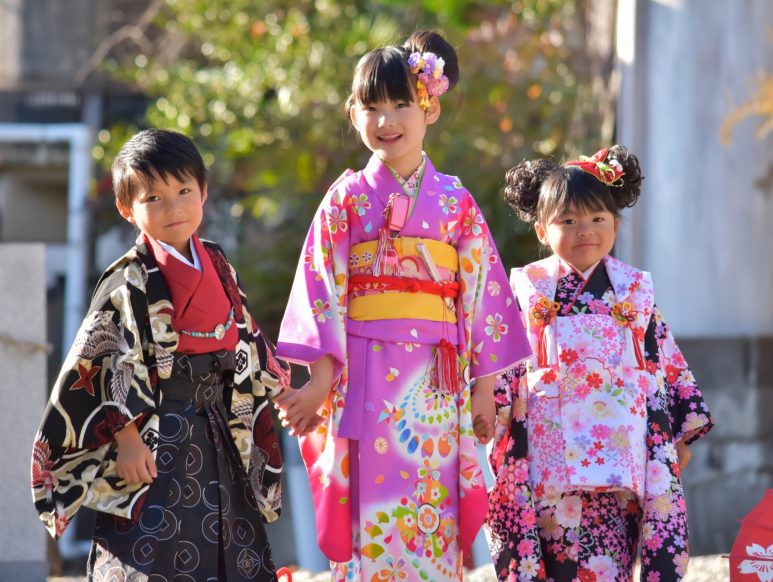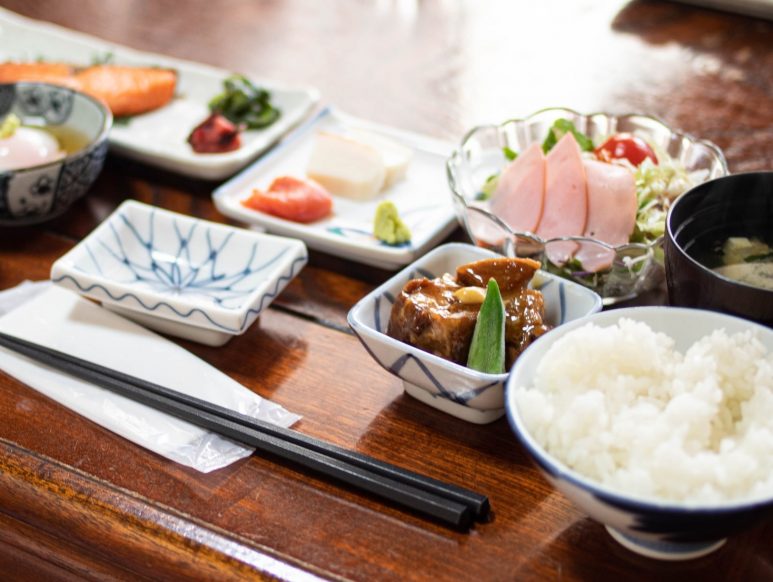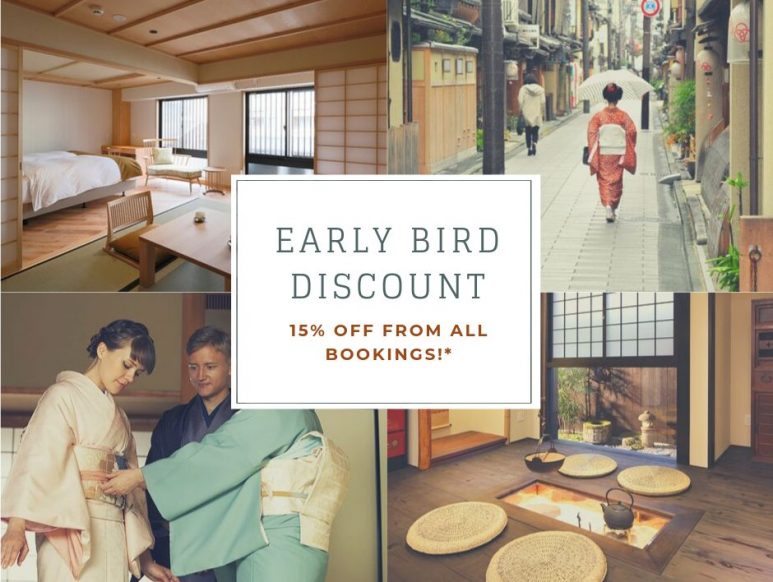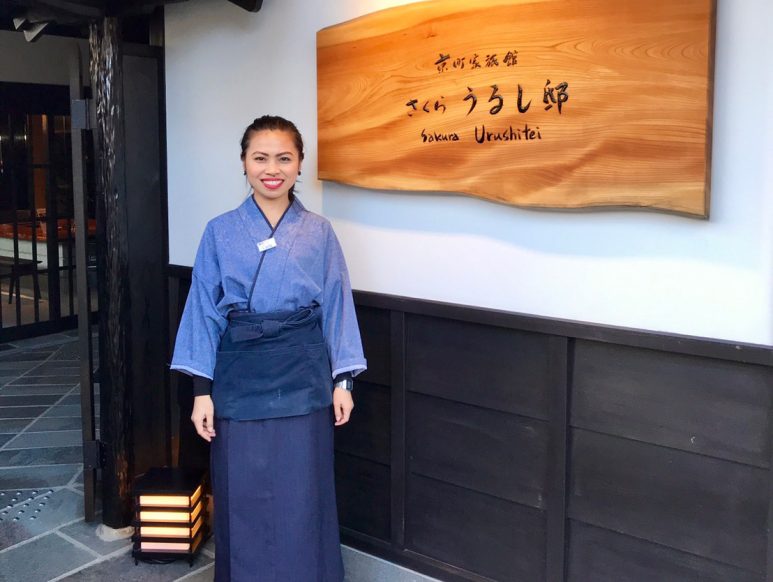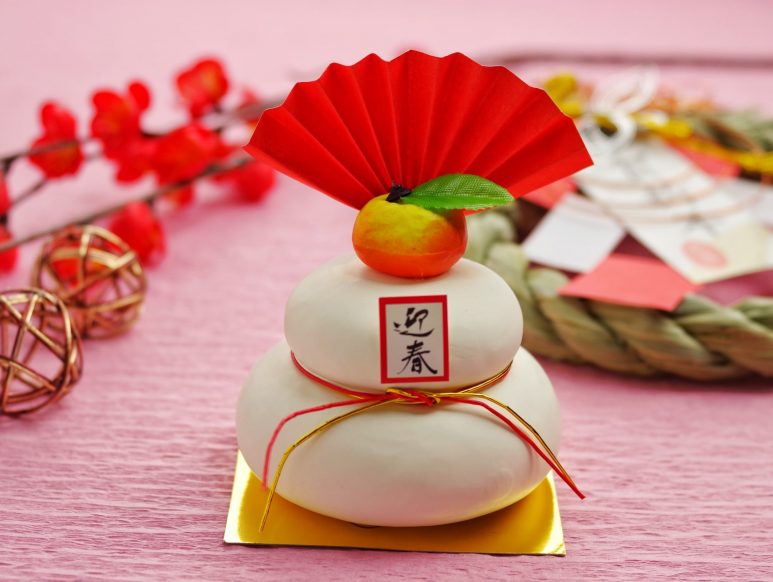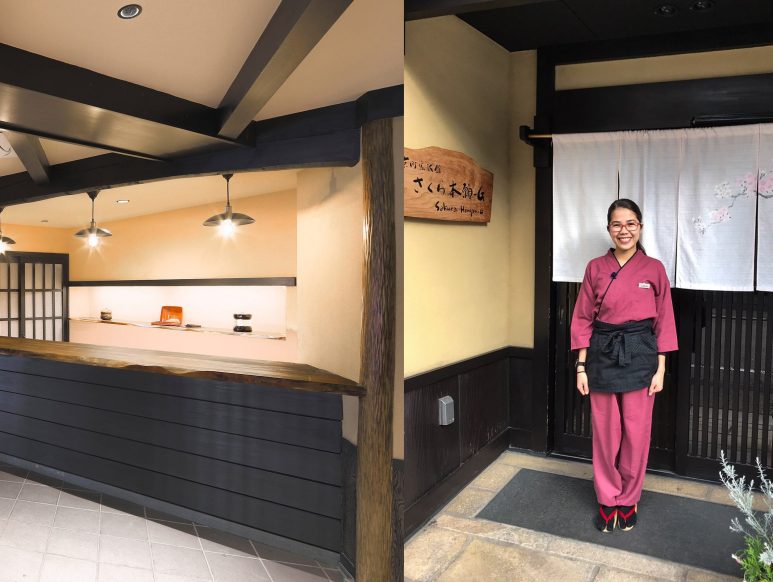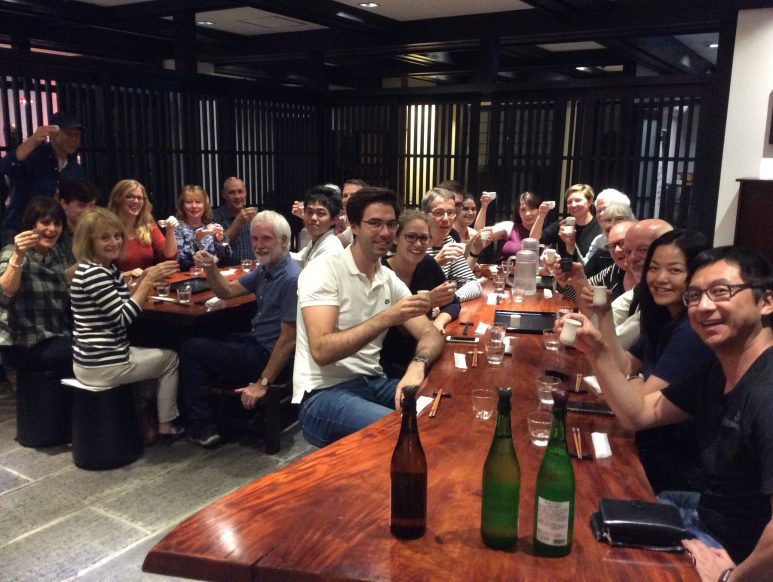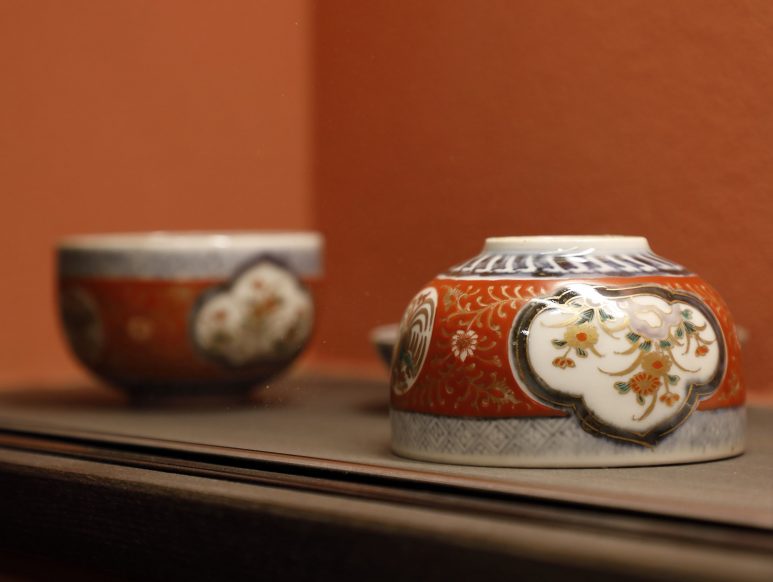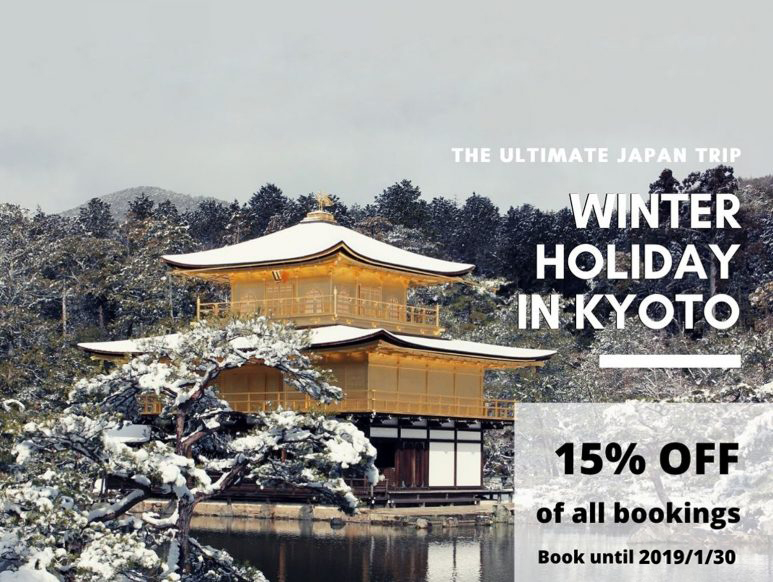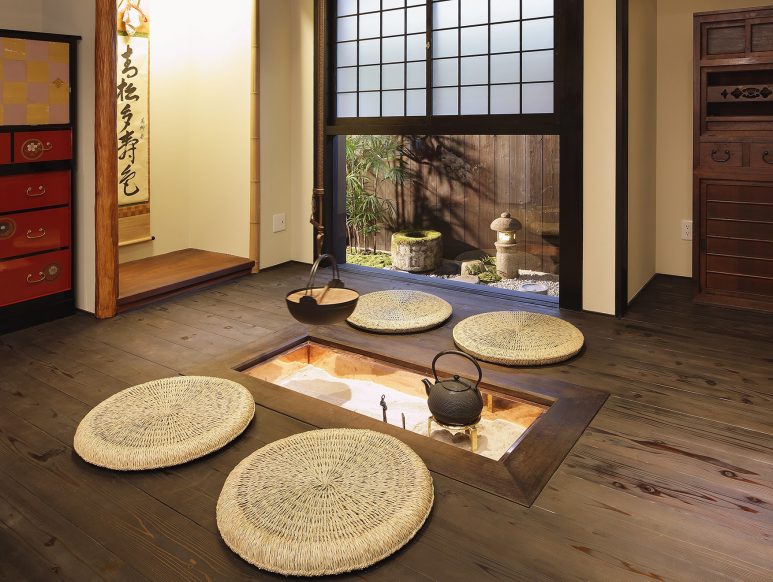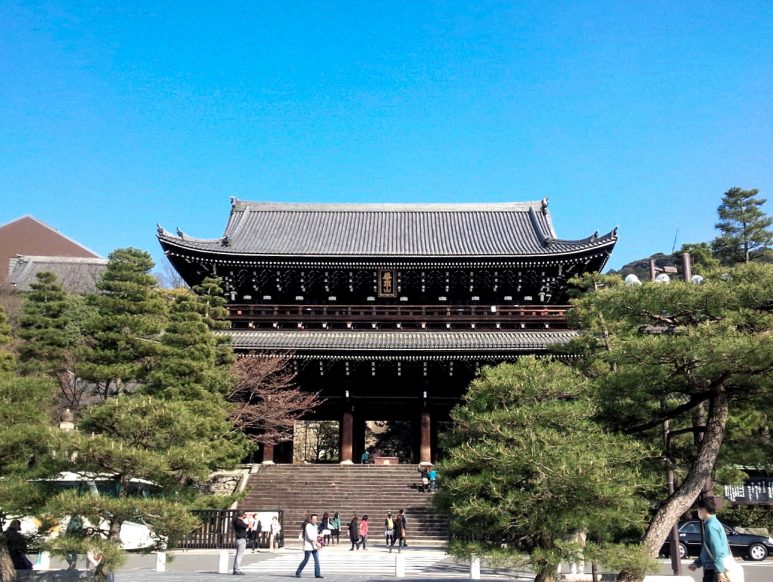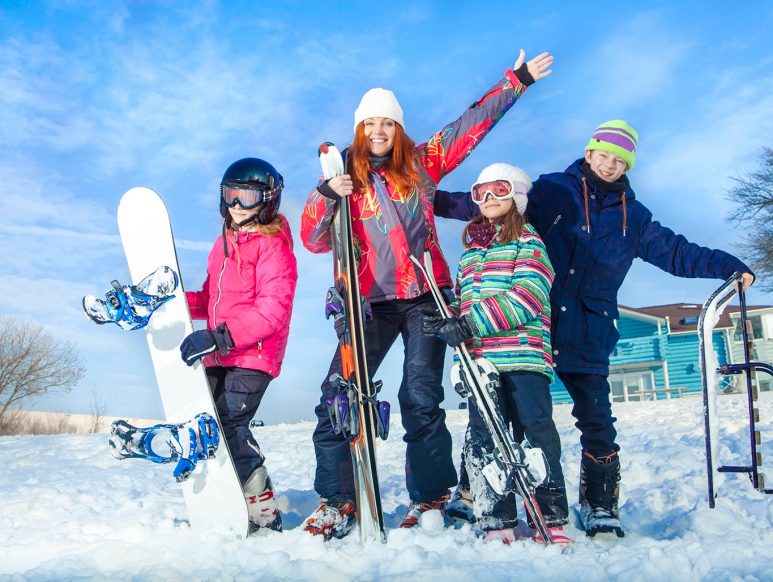Sep 24, 2019
- Kyoto
- Sakura Urushitei
Experience Winter Wonderland in Kyoto
WINTER CAN BE A GREAT SEASON TO VISIT JAPAN. GENERALLY VISITED DURING THE SPRING OR FALL, KYOTO IS ALSO DELIGHTFUL IN WINTER. HERE ARE 4 WAYS TO ENJOY A MORE PEACEFUL AND ENCHANTING KYOTO DURING THE WINTER MONTHS!
First of all, please remember that the winter is the slowest season in Kyoto which means you don’t have to worry about all the crowds and cues at the popular sites. The hotels tend to be cheaper and you can enjoy many indoor activities by getting special attention from local hosts. We truly recommend you to go traditional and try a ryokan as your base of discovering the city. If you haven’t booked your accommodation yet, hurry up and check our availabilities here.
From delicious winter dishes, to hot springs, there are many alternative things to do in Kyoto during the Winter that will make you want to visit this ancient capital again. Just keep in mind: no matter what part of Kyoto you are staying at, you can always visit the shopping arcade, downtown bookstores and pet cafes on a cold day in Kyoto. Let’s see what else you can do:
KYOTO IN WINTER
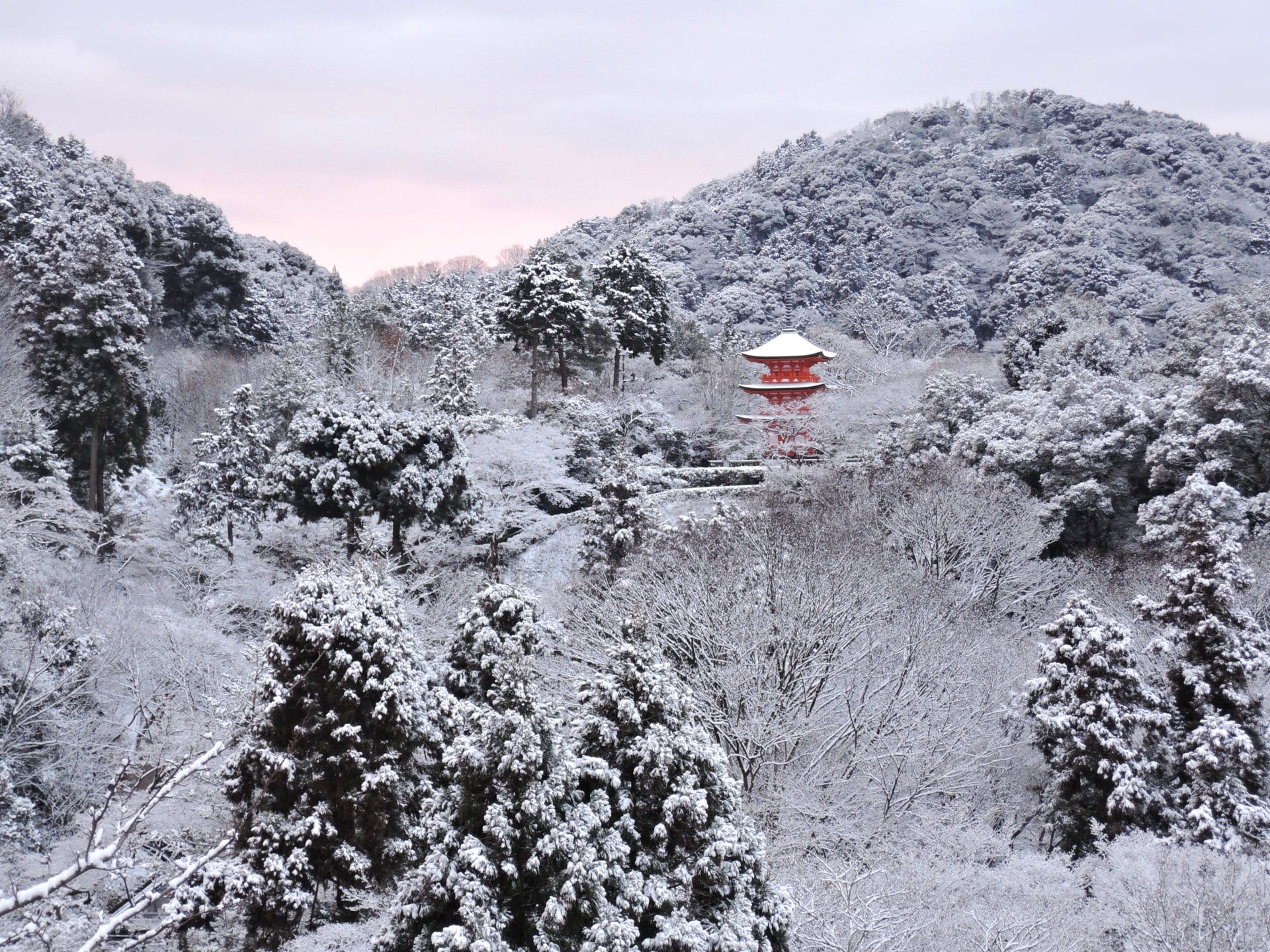
There is no season to visit Kyoto. Each one is so unique, with much to offer. If you happen to be in Kyoto, know that this is a rare treat! Nothing is more beautiful than some of the city temples or shrines covered with a white carpet. It usually doesn’t last long. In winter, there are fairly mild periods, with highs above 10 °C (50 °F), alternating with cold periods, with wind and rain, highs around 5/7 °C (41/45 °F) or less, and possible falls of sleet or snow. Snowfalls, however, are usually light, as are nocturnal frosts.
Furthermore, we recommend you to avoid the period of Chinese New Year holiday 1/24~1/30, as it can get crowded and prices in Kyoto go higher.
ADMIRE THE TEMPLES UNDER A LAYER OF SNOW
Enjoying the splendid Buddhist temples and shinto shrines of the city in the snow is a magical experience. The roofs of temples and pagodas are covered with a very atmospheric white coat, which encourages calm and meditation. The gardens change look different too, and the water of the ponds sometimes freezes. Who wouldn’t want to spend a few hours in this environment reflecting on the big questions of life?
Kinkaku-ji (the Golden Pavilion, see on the top of the article) is particularly impressive during the snowy days.
EAT NABE
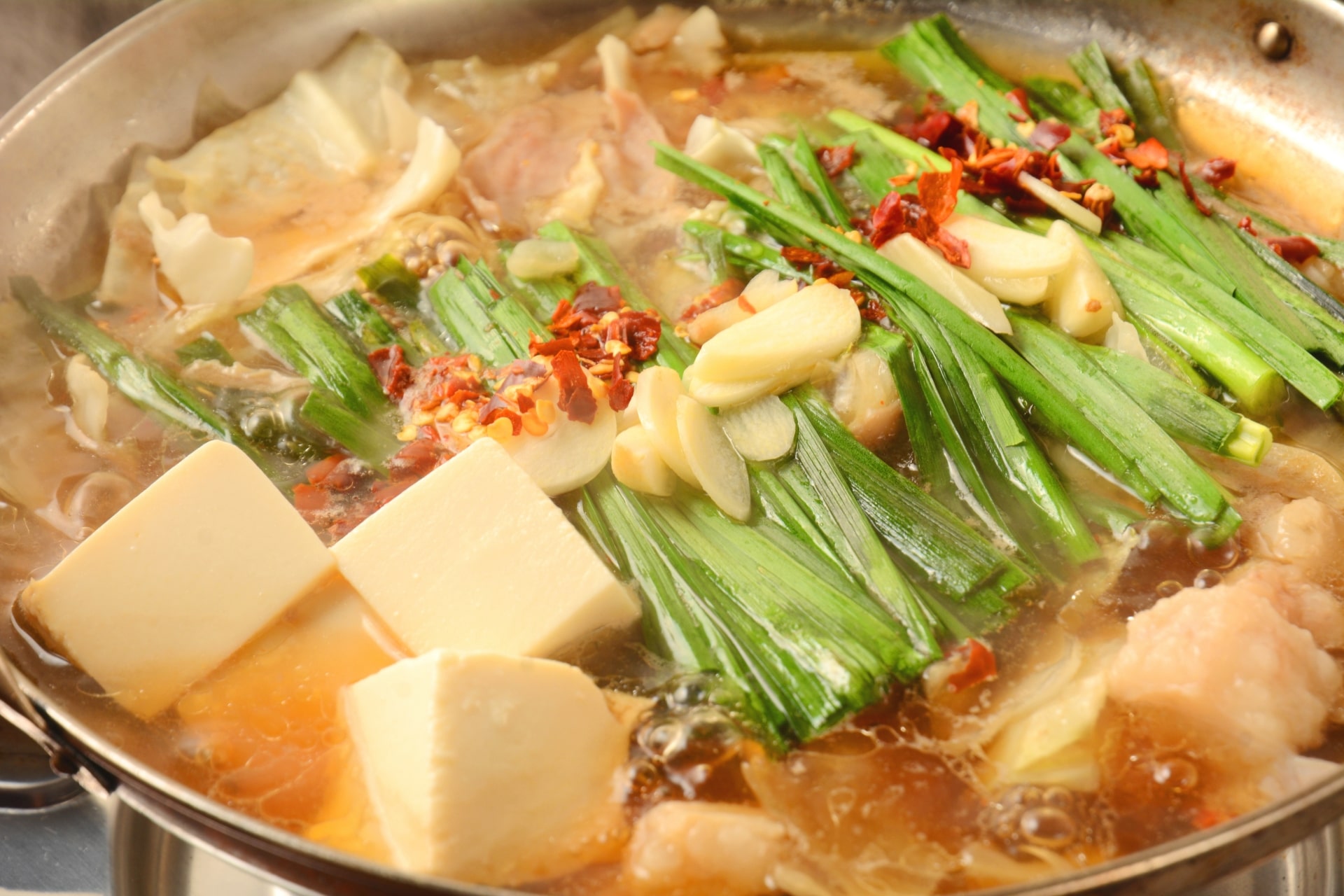
Nabe is the perfect meal to fill you and your friends up on a cold winter night. Perhaps the most popular winter food in Japan, nabe is a nutritious, versatile, and easy to make savory food. It encourages an atmosphere of sharing and togetherness. Cooked in a large pot and self-served by diners, typical ingredients for this Japanese style hot pot include cabbage, green onion, mushrooms, tofu, bok choy, and the diner’s choice of meat.
What makes it truly special is not the ingredients though. This meal is typically shared among a group of family or friends. One person is in charge of the cooking and addition of the ingredients. The rest of the diners take what they want directly from the cooking pot to add to their bowls. Sometimes they add dried rice to the remaining broth at the end of the meal. It creates a savory rice porridge infused with the flavors of all the ingredients. This adds a final layer of comforting, warm fullness to the meal that contributes to its overwhelming popularity in the cold months. Because nabe is warm, filling, and communal it has a reputation of being a quintessentially winter food in Japan when family and friends gather inside against the cold.
TRY TRADITIONAL TEA CEREMONY
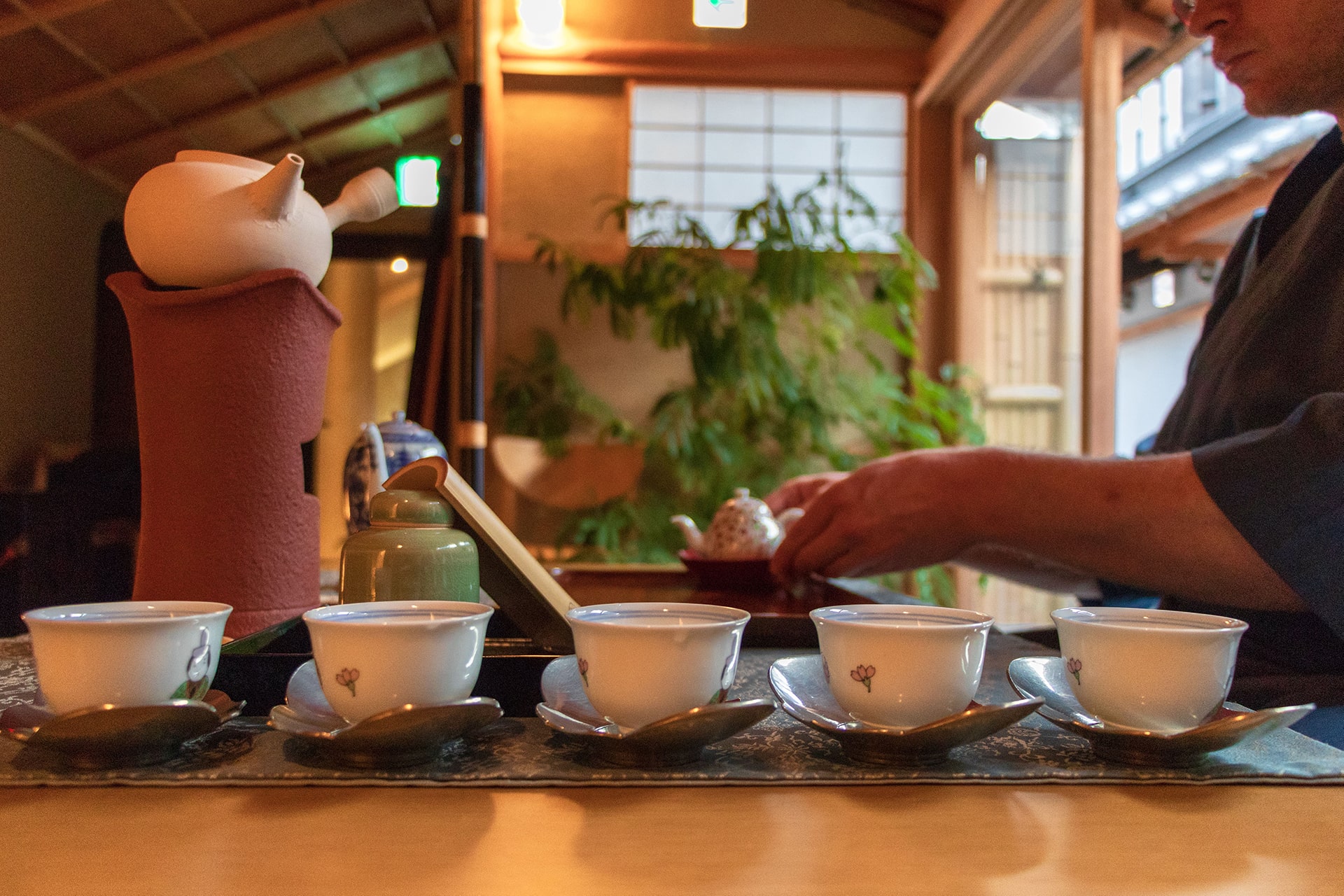
Kyoto is surrounded by tall mountains. That’s why summers feel warmer and Winters feel colder compared to Tokyo and Osaka. After visiting a few temples and shrines on a cold day, you may really start thinking about finding a place where there is a heater. Luckily, this ancient capital has many indoor workshops and cultural centers. They offer various kinds of courses and experiences ranging from pottery making to tea ceremony, calligraphy to traditional cooking.
Luckily you can try this relaxing activity in Kiyomachiya Ryokan Sakura Urushitei dressing in your Yukata, drinking bitter matcha tea and eating Japanese sweets. However, our ryokan offers many more activities to you. If you are interested you can also learn pottery, flower arrangement, Japanese sake tasting or Japanese calligraphy. On the latest one, you learn how one’s true nature is reflected on the scripts coming out of one’s brush which leads to the Zen mindset. The traditional Japanese tea ceremony
EXPERIENCE AN OUTDOOR JAPANESE ONSEN (KURAMA)
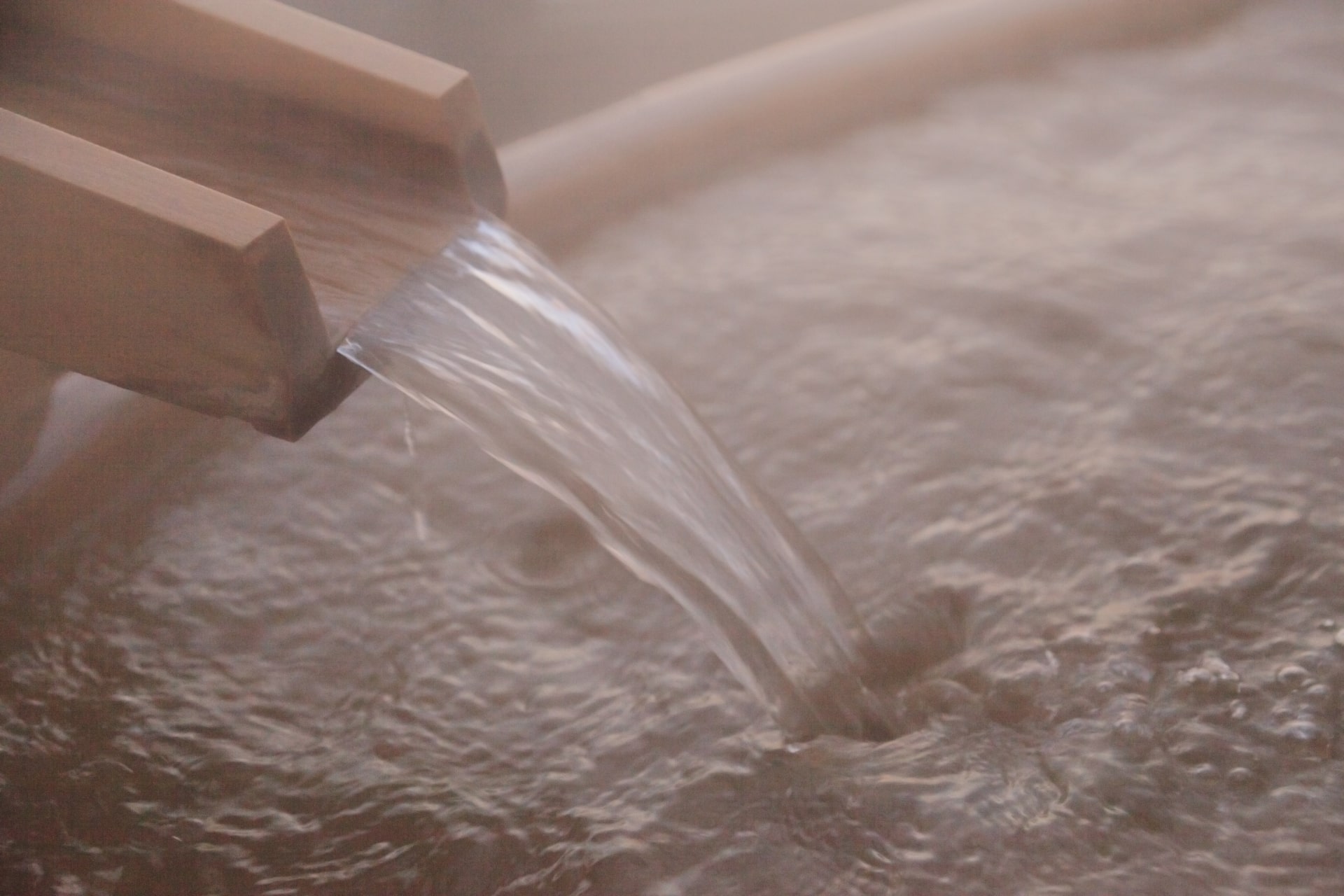
With the cool temperatures of the winter months and the sometimes icy cold of Japan, it’s great to warm up. Luckily, Kyoto is home to many hot springs (onsen), where you can immerse yourself and relax.
In the city center, you’ll find many onsen with indoor pools. But it’s in Kurama, a small village easily accessible to the north of the city, that you will find Kurama Onsen, which offers the opportunity to bask in the hot water outdoors. Here, you’ll enjoy a view of the surrounding mountains, during a moment of relaxation, in sulfuric water with curative properties. Sounds tempting right?
After all these activities and amazing food, there is nothing better than hopping into your futon bed and covering yourself with a warm and thick blanket. Please feel free to discover our ryokans, rooms, activities, and contact us if you have any questions. We are looking forward to see you in Kyoto.

